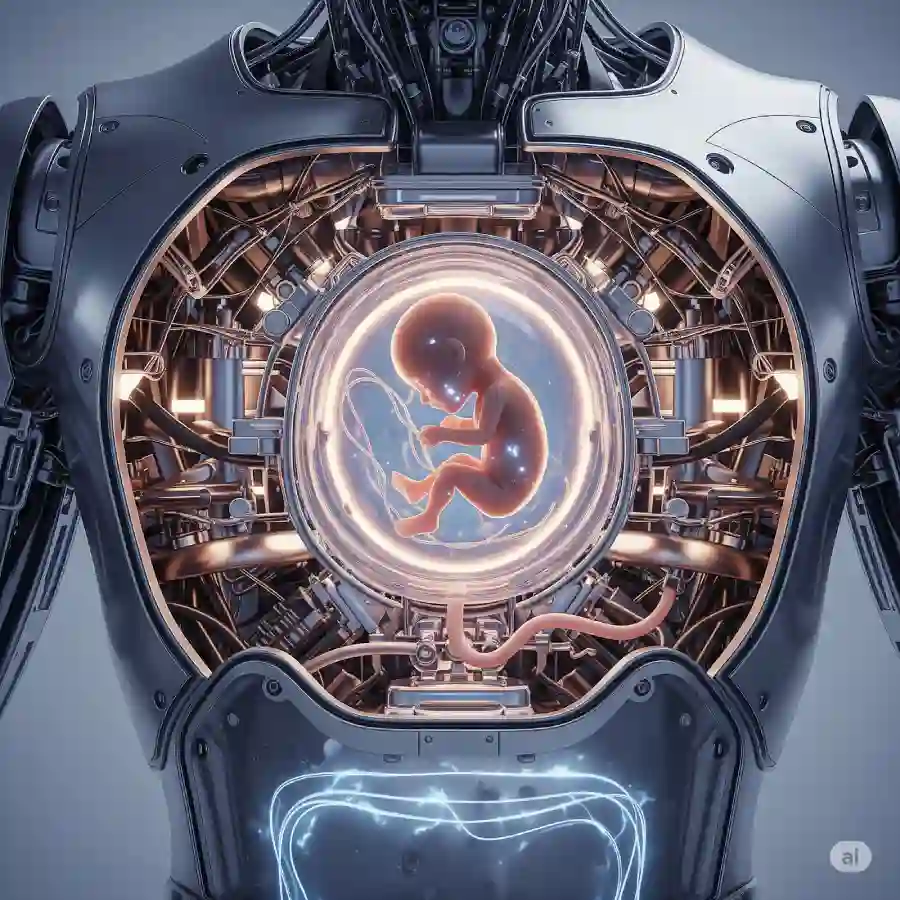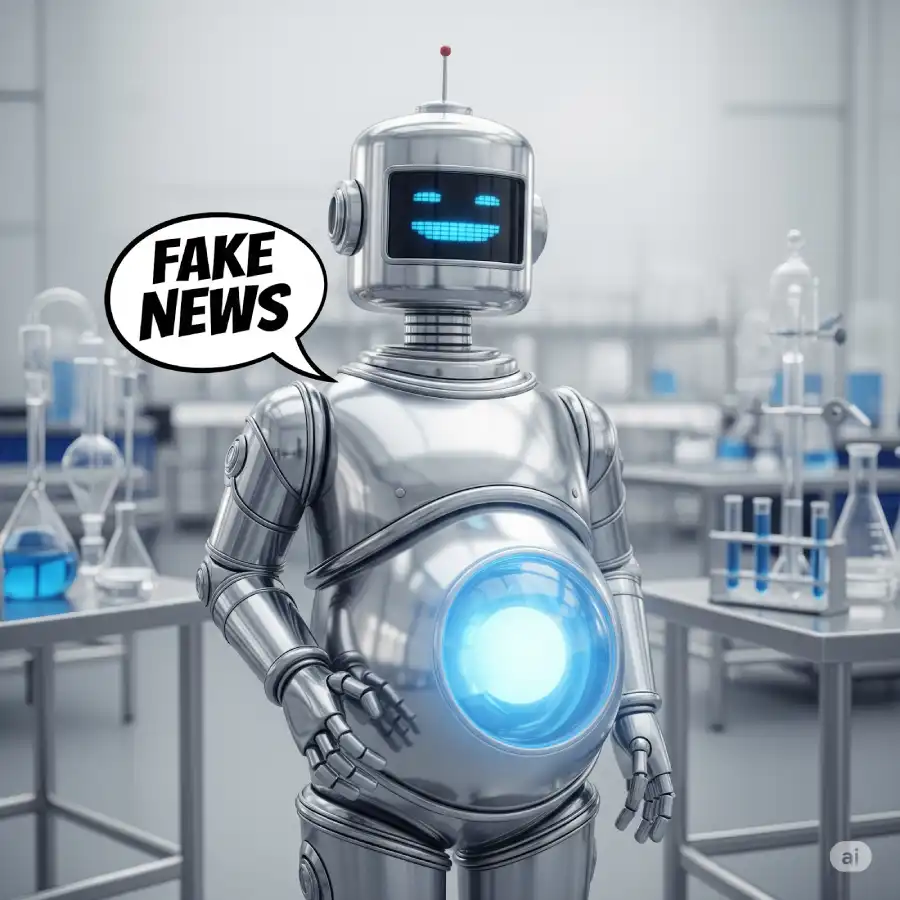As tabloid news spreads visions of a Chinese ‘pregnancy robot,’ scientists caution it’s no closer to real life than science fiction.
A bizarre story went viral last week, claiming Chinese engineers have built a humanoid “pregnancy robot” capable of carrying a baby from conception to birth, inside a humanoid robotic body, artificial womb, and all. But Live Science has shot down the hype, labeling the tale a total fabrication that scientists and institutions never saw coming.
Even Snopes and Nanyang Technological University have chimed in, confirming no such Zhang Qifeng exists, and no labs in Singapore or China are working on anything resembling this idea. That hasn’t stopped headlines from exploding, sparking serious questions about our appetite for bio-innovations, even when they’re impossible.
Yet the story’s deception prompted an important public dialogue: just how close are artificial wombs to becoming real, ethical, and viable medical tools? Right now, experts say, the answer is “not even close.”
The Claim That Sparked It All

The story pinned the invention on a man named Zhang Qifeng, supposedly based at Singapore’s Nanyang Technological University and working with Chinese labs. He was said to be behind a humanoid robot that could carry pregnancies in a lab-grown womb, complete with hormone checks and embryo monitors. Photos that went around showed a mannequin hooked up to tubes and screens, just enough hospital-like scenery to make it look convincing.
Toss in some heavy jargon about gestation cycles and bio-control systems, and the package felt almost believable. After all, China’s record in genetic research is often portrayed as pushing boundaries at breakneck speed. But here’s the catch: Zhang doesn’t exist, the university never backed the project, and those images look more like recycled props than real science.
What really gave the robot pregnancy hoax legs was how fast it slipped from random social media chatter into established newsrooms. In India, both The Indian Express and India Today ran pieces on it, presenting the whole thing as if it were a genuine breakthrough. Overseas, the New York Post did what it does best: splashy headlines and viral packaging.
The odd part was that nobody bothered with the basics: checking if the researcher existed, if the photos were legit, or if the science even made sense. Because several outlets repeated the same claim without digging deeper, it started to look more credible than it was. Within a few days, it was all over X (formerly Twitter), with people sharing it as if it were a settled fact. In the end, the real story wasn’t a pregnancy robot; it was how easily a fake story can snowball, once repetition beats verification.
Where the Real Science Stands

The unraveling came when Snopes and LiveScience stepped in and did what the others didn’t: basic fact-checking. Their investigation revealed that “Zhang Qifeng” was a non-existent academic, and no records tied the name to Nanyang Technological University. They traced the viral images back to dubious sources and confirmed that the supposed “pregnancy robot” was little more than an AI-generated hoax wrapped in pseudo-scientific language. Once this was published, other outlets quietly backpedaled, but by then the story had already reached millions.
The debunking underscored an uncomfortable truth about digital news cycles: once a claim hits the virality sweet spot, it’s almost impossible to reel it back, even when it’s demonstrably false. For readers, the damage is done, and for science journalists, the episode becomes yet another cautionary tale about what happens when speed trumps skepticism.
The irony is that while the robot hoax was fake, artificial womb research is very real, just nowhere near science fiction headlines. Scientists in Japan and the U.S. have managed to keep premature lamb fetuses alive for weeks inside fluid-filled biobags, simulating the womb environment. Similar experiments are underway to better support extremely premature human babies, though no one is close to “growing” a baby entirely outside the body.
Ethical debates also swirl around how such technology could be misused if it ever matures beyond neonatal care. So while no humanoid robot is carrying pregnancies in a lab today, the incremental advances in ex-vivo gestation are setting the stage for a future where parts of a pregnancy might eventually be transferred outside the human body. It’s slow, cautious progress and quite the opposite of the viral fantasy that had the internet convinced.
Maybe one day
The pregnancy robot story is a reminder that extraordinary claims require extraordinary proof. What began as a fabricated profile and a few manipulated images snowballed into international “news” because it played into our fascination with futuristic technology and China’s appetite for bold experiments. The debunking showed just how thin the line can be between fact and fiction in today’s media landscape.
Meanwhile, the real science of artificial wombs is progressing quietly, focused not on spectacle but on saving premature infants. That gap between viral hype and sober reality was pretty wide this time around, though there is absolutely no harm in thinking about a future with pregnancy robots. After all, the next breakthrough might sound just as outlandish, and may be real!
So while we should definitely fact-check viral claims because that genie doesn’t go back in the bottle, dreaming up things that don’t exist yet is exactly what humans do best.
In case you missed:
- NVIDIA’s Isaac GR00T N1: From Lab Prototype to Real-World Robot Brain
- Slaughterbots: Robot Warriors in the Indian Armed Forces!
- CES 2025: NVIDIA’s Cosmos Just Gave Robots a ‘ChatGPT Moment’!
- Dire Wolves are not back; what we got are designer dogs for GoT fans!
- Tesla’s India Launch: It’s not about the Model Y, it’s about the AI!
- So AI can get bored, “suffer,” and even commit suicide?
- Humans Just Achieved Teleportation? Clickbait vs. Facts
- Could Contact Lenses be the Key to Fully Wearable BCIs?
- X’s Trend Genius: Social Media Psychic or Just Another Algorithm?
- Scientists establish two-way Lucid Dream communication!










